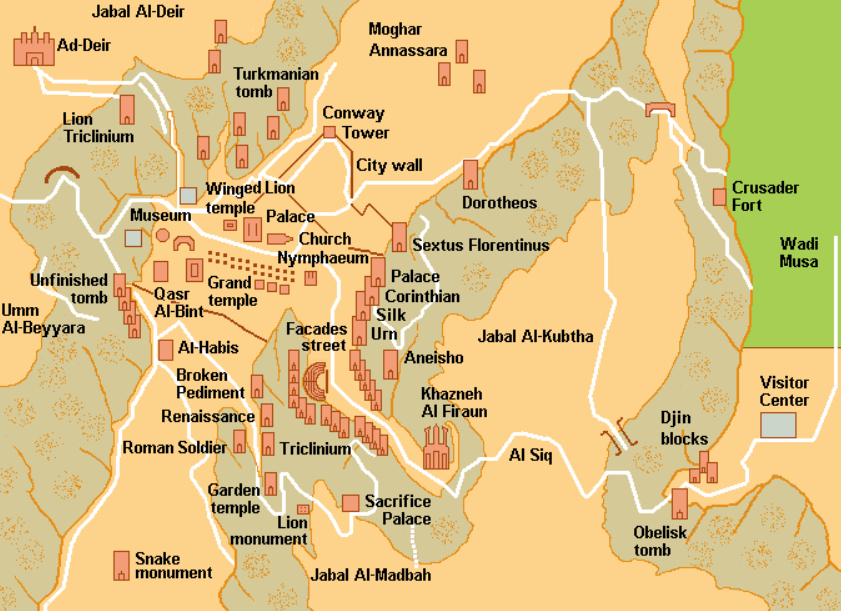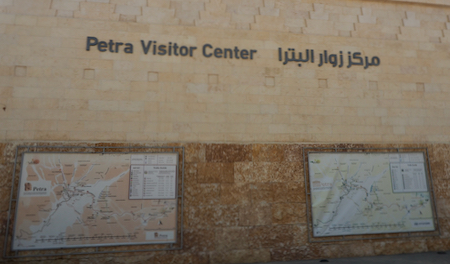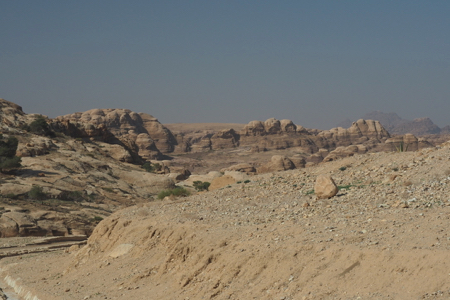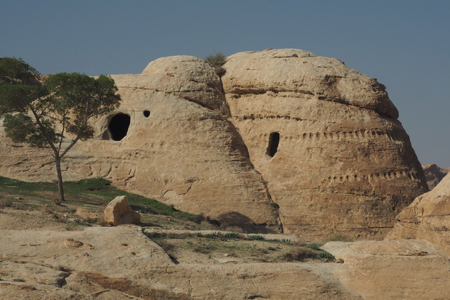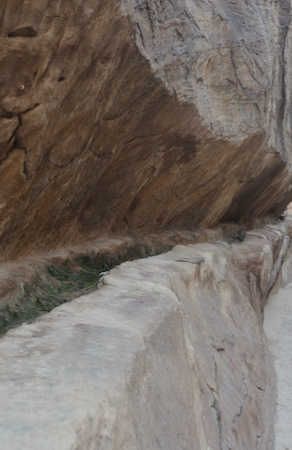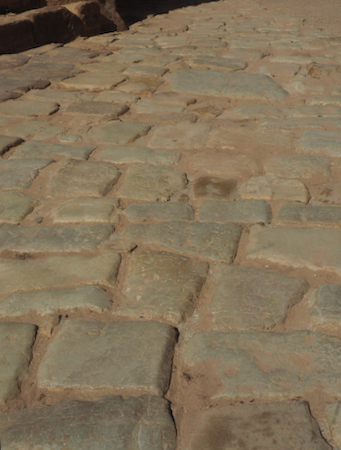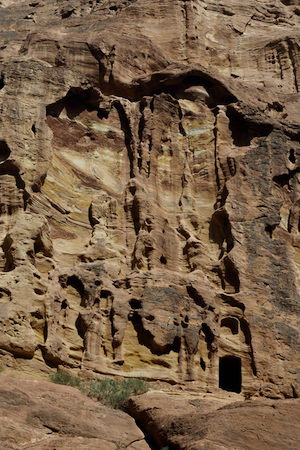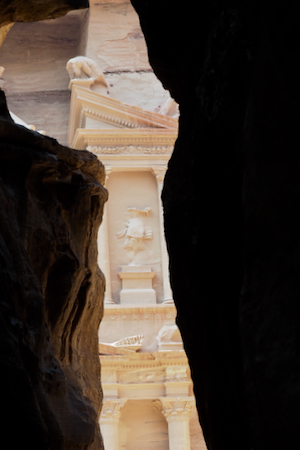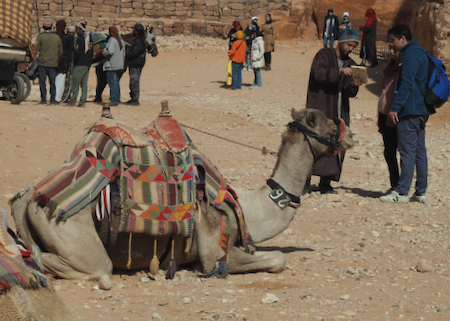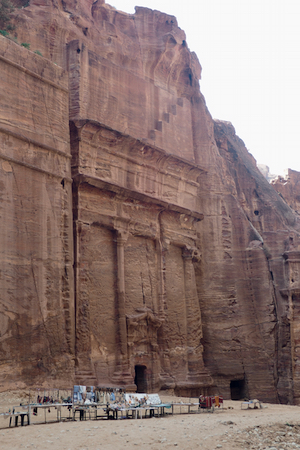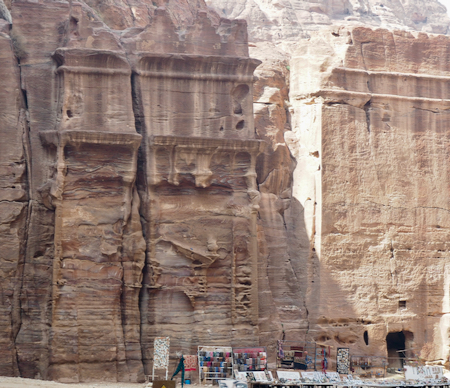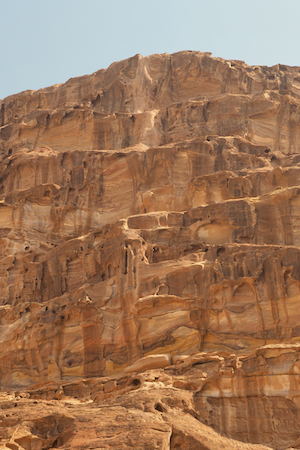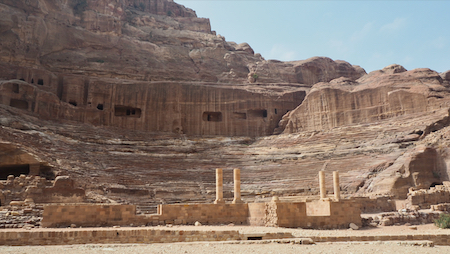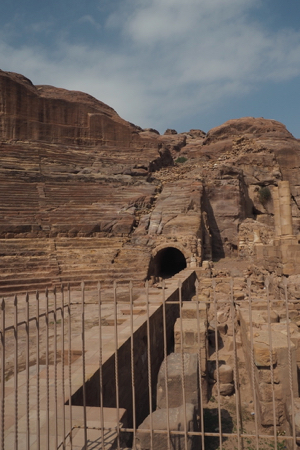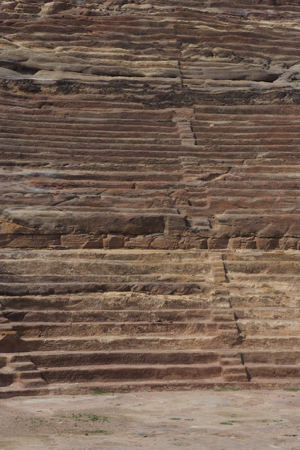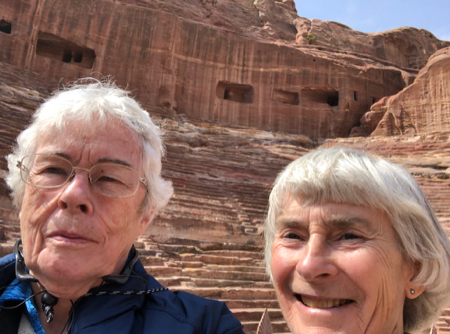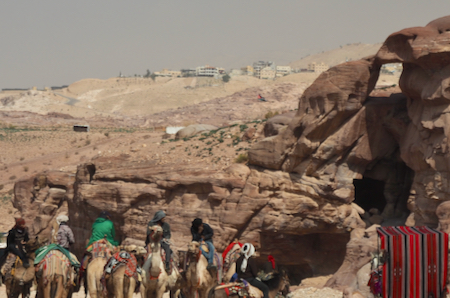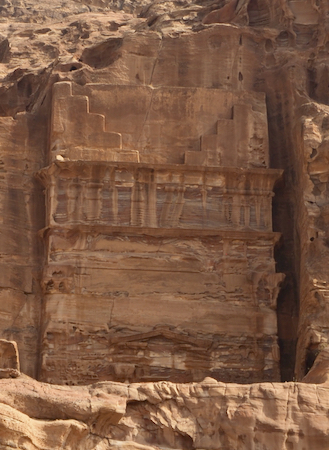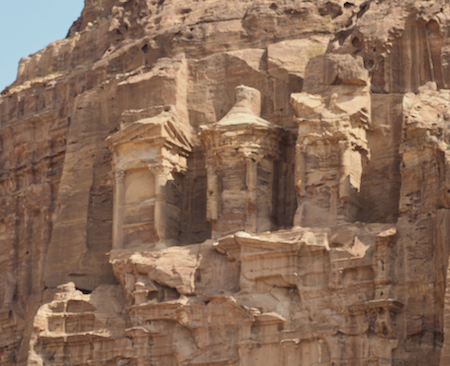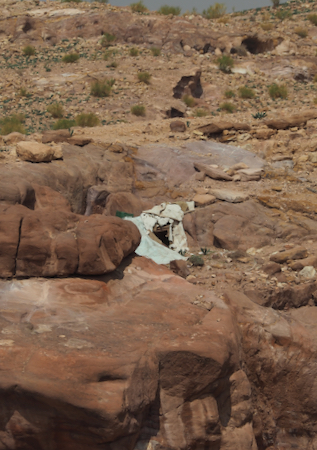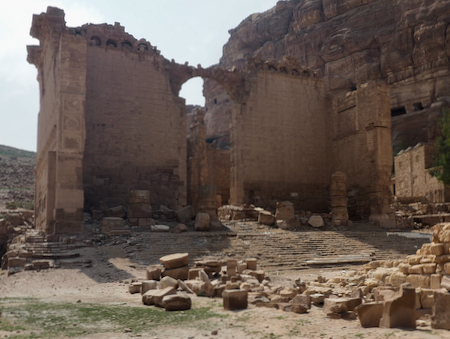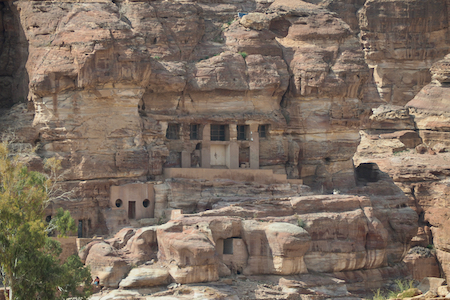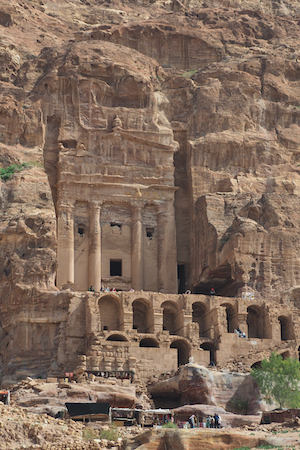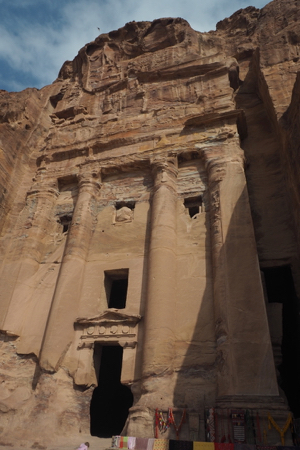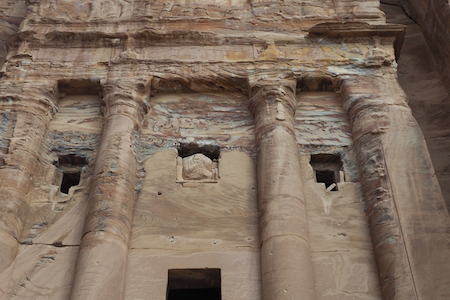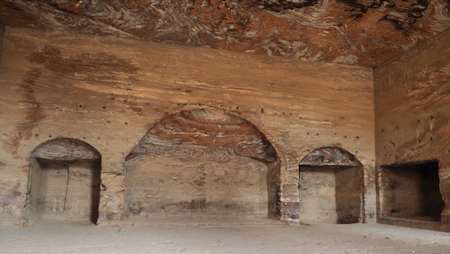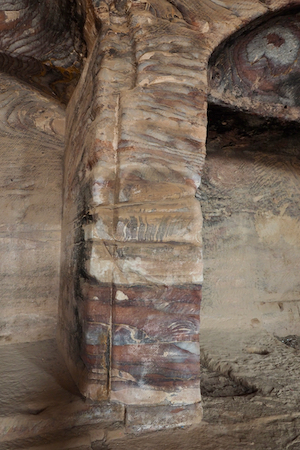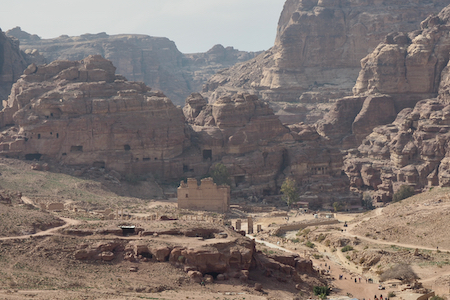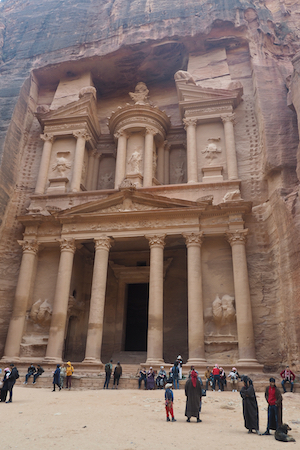Thurs., 2/24/22 - Petra
The entire day was spent walking through the incredible fabled city of Petra. Petra was known only to the local Bedouin tribesmen who lived in the caves in the sandstone until 1812 when a Swiss traveler, disguised as an Arab, found the city. To walk the city and see the narrow entrance canyon (the Siq) and the soaring temples, over 500 tombs, and the 3,000-seat amphitheater took six hours and covered 5+ miles. There are not words to describe the carved sandstone façades, the colors of the layers of rock, or the carved stone amphitheater and tombs.
Petra was built by the Nabataeans, an ancient Arab people who were nomadic. The area around Petra was inhabited as early at 7,000 BCE and the Nabataeans may have been using Petra as their capital city as early as the 4th century BCE. In 106 CE, Petra lost its independence and became a client state of the Roman Empire.
The Nabataeans became very successful traders. In addition, they were especially skilled in the collection of rain water to sustain life in the city and for agriculture, and in stone carving. There are still water channels carved into both side walls of the Siq, the entrance to the city of Petra. In more modern times diversions for the water from flash flooding have been built. In spite of this, some French tourists drowned in a flash flood here in 1995. We are so glad we have a beautiful day.
Map of Petra - our excursion took us from the visitor center down to the area of the Museum and then back up to the entrance.
The surrounding land at Petra
Tombs
Crow-step design above this tomb entrance. The exact meaning of the design is subject to speculation and interpretation. Many of the tombs at Petra have these carvings.
Obelisk Tomb with the Bab as-Siq Triclinium below
The Siq
The Siq entrance was carved by water and opened by the action of early earthquakes. The Siq was used by people to enter the town where trade from Egypt and Saudi Arabia went to Turkey and Syria and merchandise from China went on to Eastern Europe. This was a meeting place along several trade routes. Camels and donkeys used other entrances into Petra. There are several niches where idols were carved into the walls. These indicated worship stations for Egyptians, Greeks, and Romans.
Water channel along the side of the Siq
Dam built into a side canyon to keep water from rushing down into the Siq
Large cobblestones - makes walking a challenge
Tombs and erosion in the sandstone
The Siq ends at a large open space where the impressive Treasury - Al-Khazneh was carved into the stone wall. It was engineered to withstand rain, flooding, and earthquakes. Only one of the six front columns had to be reconstructed.
First view of Al-Khazneh - the Treasury
Al-Khazneh - the Treasury
Figure of Isis in the center above the pediment
Patiently waiting for a rider - very pretty "saddle blanket"
From the Treasury we followed the Façades Street, containing the tombs of rich people; past the Place of High Sacrifice and the Royal Tombs. The stone paving of the street was put in place by Roman soldiers. The colonnaded street of shops was used during the Roman occupation. Just before the Basin there were three churches and parts of the Grand Temple (Qasr Al Bint). The entrance, courtyard, and temple wall still remain.
The Façades Street
The Façades Street
The Façades Street
Sandstone formations
En-Nejr theatre -Nabataean 1st century CE
En-Nejr theatre -Nabataean 1st century CE
En-Nejr theatre -Nabataean 1st century CE
Trying a "selfie" at the theater
Many forms of transport
Sandstone carvings and formations
Sandstone carvings and formations
Someone's cave home
Tombs along the Façades Street
Grand Temple (Qasr Al Bint)
We ate a nice buffet lunch at a restaurant in the basin and then the group split up. Marge and I walked back to the tomb (the Urn Tomb) that was made into a Byzantine church and walked up a “gazillion” stone steps to stand inside the cavernous church. The colors and textures of the rock walls and ceiling were incredible. It was worth the climb. The stones removed from the cavern of the church were used to build houses within the basin area but all of the houses tumbled down during earthquakes.
Someone's fancy tomb
Urn Tomb - which we climbed up to
Urn Tomb
Urn Tomb
Ceiling inside the Urn Tomb
Room inside the Urn Tomb
Details of the sandstone pillar in the Urn Tomb
Looking back at the Grand Temple (Qasr Al Bint) and other tomb façades
Last look at Al Khazneh
After climbing up to the Urn Tomb, we returned to the main path and walked all the way back up to the site entrance. Up is the operative word as it is literally two miles+ of uphill walking with several stops to sit and reduce the heart rate.
At the entrance we purchased a Petra, Jordan spoon (for Gale's collection) and each bought a t-shirt to add to our carry-on clothing supply.
We are not going to have our suitcases delivered to Petra. They evidently were flown to Amman last night but the authorities will not release them to anyone but the owners! Hopefully they will be given to us when we arrive at the Amman airport tomorrow for our flight to Cairo.
| Return to Top | Return to Itinerary | Return to Trips page to view other trips | Return to Dreamcatcher Home Page |
